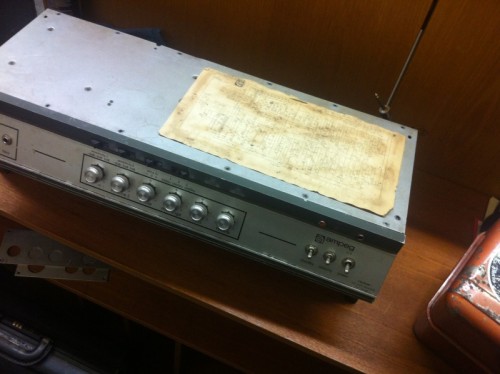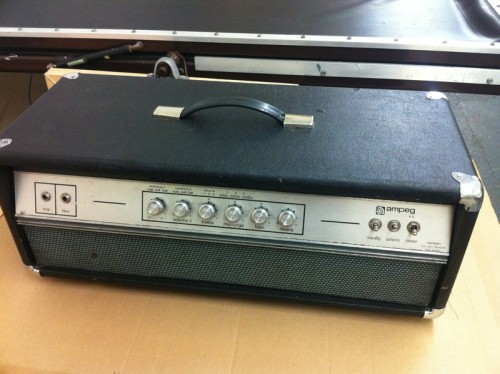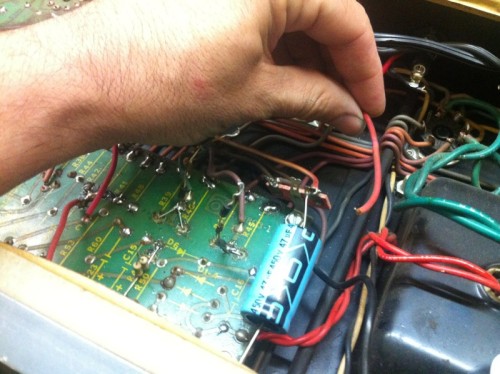My boss Mauz’s Ampeg V-4 had cut out. It was very strange… one day he was at practice, and shit first started cutting in and out. Then it stopped making sound altogether. It still had power, which was the weirdest part. This beauty (one of my favorite amps of all time) had to be resurrected.
As I’d already fixed multiple problems on my own V-4B, which is almost exactly the same amp minus a reverb circuit, I was unafeered of delving into Mauz’s. I think he was more afraid than I was. Despite knowing it was in my successful-yet-amateurish hands, it was his baby. His mojo. His tone. He shouldn’t have been worried.
The team that designed the Ampeg V-4 were top notch, you see. They made this the most easily worked on amp ever. A series of plates on the shell allow access to both sides of the main circuit board. Brilliant. And the handy circuit diagram printed on papyrus that some ancient Egyptians taped to the top of the amp helped, too.

I poked around with my multimeter and found that the plate, or pin 3, of the output tubes weren’t getting power. Everything else was. I couldn’t figure out why and I thought maybe the output transformer was blown, which would be a very big, very expensive deal. Then I opened the bottom plates of the amp and was able to find this:
Oh, thank you, thank you Ampeg designers. Your looksee ports made finding this silly little problem of a loose wire that much easier to locate and fix. A quick solder later, the amp was back up to snuff. Of course, it’s a little scary, because this wire is supposed to carry around 550V. If the other end had come loose, sparks could’ve flown or people been electrocuted. And that’s why it’s important your amp has a three-prong plug with proper grounding.
Regular check-ups with a qualified amp Doktor (self-appointed) help, too.


